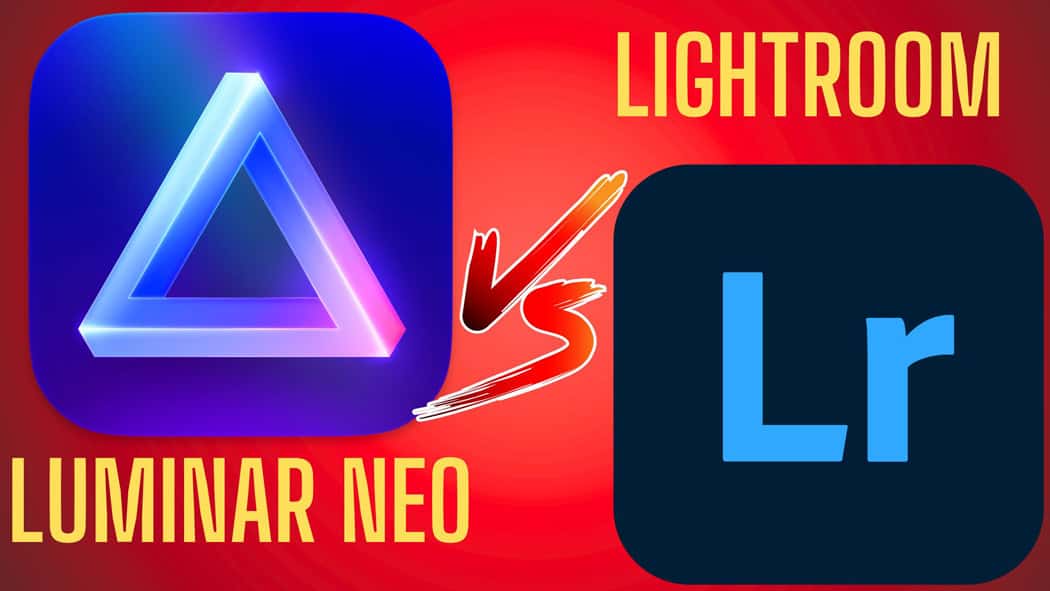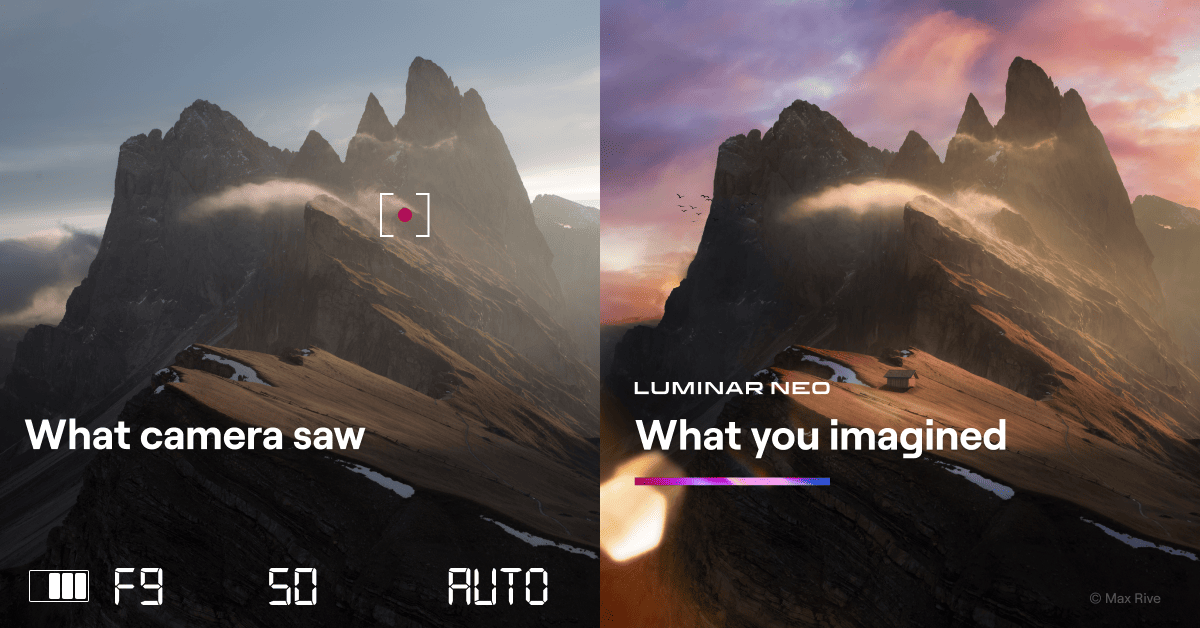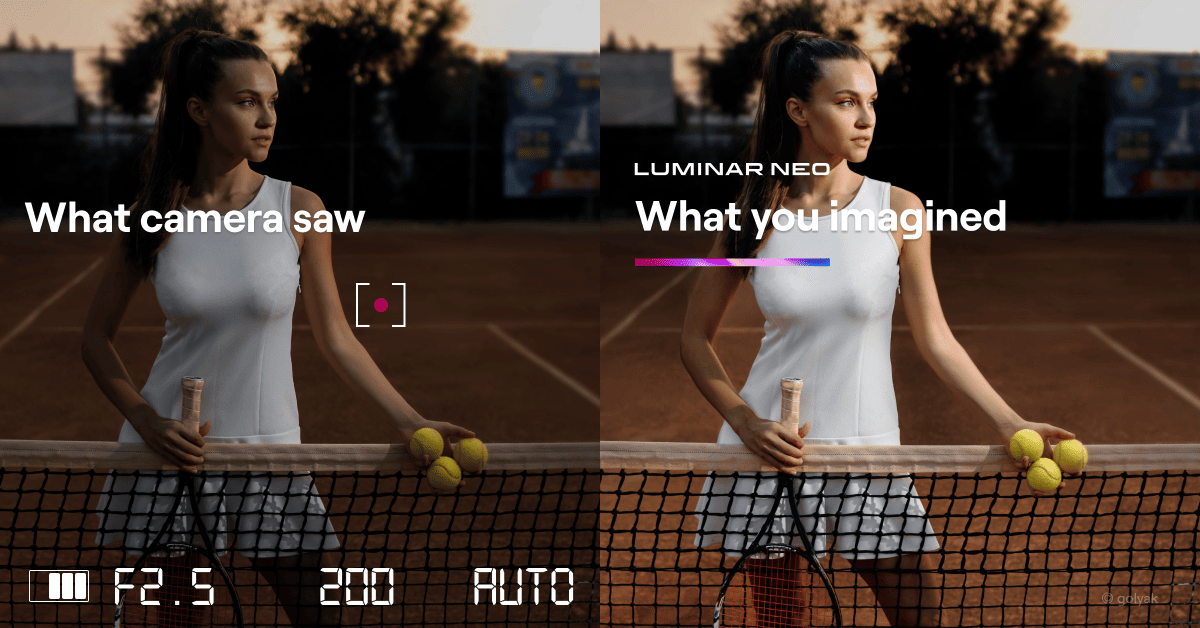Luminar Neo vs Lightroom which one is right for you?

Luminar Neo vs Lightroom – Is Luminar Neo the best Lightroom alternative now?
In the world of photography editing software, there are two editing platforms that really standout these days, yes, you guessed it… it’s Adobe with their Lightroom and Photoshop applications which have been the kings of photography editing software since the dawn of the digital era. Then you have the young energetic pretender to the throne in Skylum Software with Luminar Neo, which is rapidly developing and growing into a state of the art photography powerhouse.
So, has the king been overthrown and has the young pretender grown into the champion it wants to be? Well, that’s an incredibly good question and that’s what brings me to this Luminar Neo vs Lightroom review. This has honestly led to a lot of difficult questions, the first being if I was forced to choose just one, which one would it be?
Now, this is a slightly unfair question in ways as I am a long time Adobe user and I have a massive catalogue of images in Lightroom and of course I use Photoshop for a lot of my commercial shoots. So Lightroom has always been a big part of my workflow. In saying that though, Luminar Neo over the last 12 months has started to creep into my workflow an awful lot.
The best way to answer this is to actually answer these two questions and not just one, those questions are…
1.- If I were starting out in photography again today which one would I advise myself to use Lightroom or Luminar Neo?
2.- If I had to drop either Lightroom or Luminar Neo from my present workflow which one would I choose?
Lightroom vs Luminar Neo and which one would I use if I were starting out again?
For me personally, I would have to go with Luminar Neo over Adobe Lightroom for a few different reasons, the first of which has to be its fantastic range of Landscape and portrait editing features that not only give you great results but also save you a lot of time too.
I love the super easy sky replacement in Luminar Neo and yes I know Lightroom also has this facility but with Luminar Neo you also have relighting controls so you can match the colour temperature of the foreground to the replacement sky giving you super realistic results in seconds. This by the way is something I find super handy for real estate photography on those cloudy dull days.
For portraits, Luminar Neo is the clear king here as you can transform a portrait in seconds with its super easy to use AI tools, you can remove blemishes, relight faces, smoothen skin and crazily even slim faces and bodies which is super handy for those highly unflattering camera angles you can get from time to time. It’s a clear win for Luminar Neo here for results, ease of use and speed of editing.

Ease of use
They are both relatively easy to use and user friendly thankfully but Luminar Neo has a slight advantage here as it has pre installed presets you can quickly select to pre edit your photograph for you and it also has Accent AI and with just one slider it can transform your raw file as it adjusts the exposure, shadows, highlights, contrast and saturation etc… to make your image pop in a split second and again you can adjust the slider yourself to increase or decrease this look for instant results.
For me Luminar Neo over the past year to year and a half has breezed past Lightroom due to its extra features and of course the new incredibly useful AI features Skylum have added to it. Its ease of use and of course its price have to make it the standout first choice for anyone looking to start editing their photographs today.
Now in saying that Luminar Neo is not a lot better than Lightroom, it really is very close between them but Neo seems to be widening the gap constantly over the last year with the new AI tech they are consistently introducing.
I incidentally have a list of the Lightroom vs Luminar Neo features further down the page if you want to check them out.
This now brings us to the second and quiet frankly harder to question to answer now.

Would I choose Lightroom or Luminar Neo as I am now?
I have been using Adobe Lightroom now as my main editing tool for nearly ten years and during this time I have honestly grown very fond of Lightroom and it has truly engrained itself into my workflow, so answering this question is getting harder and harder now. In all honesty 12 months ago I would have said fairly quickly that I would keep Lightroom and drop Luminar Neo but today I think I am verging more towards Luminar Neo than Lightroom but there is practically nothing in it.
What do I love about Lightroom?
It has been bullet proof for me with very few issues although in saying that I had two big issues over the years that cost me days of work to sort out, one was actually one a photoshoot with a client but then again nothing is perfect.
I love the ability to shoot tethered to my desktop or laptop and for me that’s a huge plus right there for Lightroom.
The editing results from Lightroom have always been really good and more importantly terribly consistent and that has to be a massive positive in any software.
There are loads of tutorials online for Lightroom and this I know is one of the things my workshop clients love about Lightroom, so I better list that in here also 🙂
What do I love about Luminar Neo?
I love the AI tools include in Luminar Neo in their subscription plan, you basically get everything, so you can quickly sharpen, denoise (yes, Lightrooom also has this) and upscale images in seconds. You can do amazing focus stacking and tons of other things too so Luminar Neo really has you covered.
Pricing, this is possibly why a lot of people are reading this as Adobe is not the cheapest software out there and Luminar neo is far more reasonably priced and it also includes more features, in fact from time to time Skylum have big sales on Luminar Neo so do check out my discount code and special offer page here to get the latest deal on Luminar Neo.
Colouring, never did I ever think I would be writing this… over the last year I have found myself using Luminar Neo more than lightroom on both my drone and camera landscape shots as I have found it gives me better results, especially in brighter scenes. The colour balance in the edited images from Luminar Neo just look slightly better to me.
In short choosing between Lightroom vs Luminar Neo is really tough and if I had to choose I would find it incredibly difficult to say goodbye to Lightroom and shift all my work to Luminar Neo but let’s just say I am so very close to that point now.
Now is Luminar Neo better than Lightroom for everyone, clearly not but I would think for most people it would be very close and Neo might just be the better option. I can tell you though cancelling my subscription for Lightroom would be a scary moment.
You can read my full Luminar Neo review here if you want or check out the main differences I have outlined below.

Key features of Luminar Neo
It’s only fair that we start with the contender to the throne as let’s face it I am sure we all have a very good idea of how Lightroom works.
Luminar Neo is well known for its cutting-edge artificial intelligence technology, which offers a seamless editing experience, allowing users to effortlessly enhance their photos with just a few clicks. Let’s have a look at its AI-powered tools.
Luminar Neo’s AI tools…
- Accent AI this enhances your shadows, highlights contrast and more all in a single slider.
- Sky Enhancer AI enhances details, colours and contrast in your sky with just a single slider.
- Structure AI with a singler slider you can again inteligently add structure in seconds.
- Crop AI through AI and machine learning this feature will suggest the best crop for your photograph.
- Relight AI adds amazing lighting effects to your background via its AI 3D depth mapping, this helps to balance your overall lighting.
- Atmosphere AI this adds specific effects like “Fog” for example to your image via its 3D depth mapping
- Portrait Bokeh AI this adds background blur to your portrait shots to create a beautiful shallow depth of field in your portraiture.
- Face AI you can adjust the lighting on just the face, slim the face and there are also several controls for the eyes and mouth also.
- Skin AI you can adjust the Skin smoothing, shine removal and also use Blemish Removal AI.
- Body AI for those unflattering camera angles you can adjust the body shape and there is even an abdomen slider.
Although this is not an AI feature I personally find the “Landscape” section to be fantastic. The dehaze tool is in there (which is now common place in all editing applications) but below that we have a “Golden Hour” slider and “Foliage Enhancer” slider, as you can imagine the Golden Hour slider adds a beautifully soft golden hour colour tone to your image and this works really well. The Foliage enhancer then is great for getting those greens more vibrant in your image.
Another standout feature of Luminar Neo is its advanced masking capabilities. With the AI Masking tool, users can easily select and refine complex areas of their images, such as hair or intricate objects, with precision and accuracy. This level of control allows for seamless blending of effects and adjustments, giving photographers more creative freedom.
Furthermore, Luminar Neo offers a wide range of creative tools, including presets, filters, and textures, to add unique artistic touches to your photographs. The software also boasts a powerful layering system, enabling you to combine multiple adjustments and effects for advanced editing techniques.
VIP I didn’t include the expansion packs in the Luminar Neo feature list, the reason being is these are included with the susbcription model but they are another purchase if you are buying Luminar Neo outright.
The Expansion packs are what truly make Lightroom look incredibly old fashioned and outdated.
Luminar Neo Expansion Packs…
- Noiseless AI
- Upscale AI
- SuperSharp AI
- Focus Stacking
- Background Removal AI
- HDR Merge
- Magic Light AI
- Panoramic Stitching
- Studio Light AI
All of these applications are truly amazing at what they do but when they are combined with Luminar Neo they are sublime. All for less than the price of Adobe Lightroom subscription also it makes you wonder is this Luminar Neo vs Lightroom review already over? Just wait a minute though and lets have a look at Lightrooms awesome features before you make up your mind.

Key features of Lightroom
Lightroom, Adobe’s famous photography editing software, has for years been known as the industry standard for photographers. It offers you a comprehensive suite of tools for organizing, enhancing and editing your photographs. One of Lightroom’s key features is its non-destructive editing system, meaning that the original image file remains completely untouched while all adjustments are saved separately. This allows photographers to experiment with different edits and very easily revert back to the original image if needed.
Lightrooms AI features
DeNoise AI is the only real AI based feature in Lightroom right now, it does an amazing job though at removing luminanace and colour noise in your photographs. Leaving them super clean and noise free even at very high ISO’s.
Lightroom has a simply briliant brush tool with an Auto masking facility uilt in, if you have ever used this tool then you know exactly how good it is and how much of a time saver it can be.
Another strength of Lightroom is its robust cataloging system. Users can organize their photos using keywords, ratings, and flags, making it easy to search, sort, and filter images. Lightroom’s organizational capabilities are particularly useful for photographers who work with large volumes of images and need to quickly find specific photos.
In terms of editing, Lightroom offers a wide range of tools and adjustments, including exposure, color, and tone controls. Its powerful Develop module allows for precise adjustments to be made to individual elements of an image, such as shadows, highlights, and white balance. I should mention here that these controls are also in Luminar Neo which I may not have mentioned above. Lightroom also provides a variety of presets and profiles, enabling users to apply specific looks or styles to their photos with just a single click.
I think it’s clear to see for most people here that in the feature department the Luminar Neo vs Lightroom debate is non existent as Neo is clearly the massive winner here with an abundance of features and controls for all photographers.
Lightroom though has always won out for its reliability and its rock solid build quality, Skylum have really concetrated on their software bugs over the last few years and Neo has closed that gap with Lightroom now.
User interface comparison
When it comes to user interface and Luminar Neo VS Lightroom there is not a lot to choose between them They both have distinct approaches though. Luminar Neo embraces a sleek and modern interface, with a customizable workspace that allows users to arrange the panels and tools according to their preferences. The software’s intuitive layout and user-friendly design make it easy for photographers to navigate through the various editing options.
On the other hand, Lightroom follows a more traditional layout, with a panel-based interface that may appear more familiar to users who have already worked with Adobe software. Lightroom’s interface is easy to use aswell though.
There isn’t too much of a difference here between Luminar Neo vs Lightroom but I will say for a person new to both softwares Luminar Neo looks easier to use and is more straight forward but there isn’t that much in it.
Editing capabilities comparison
In terms of editing capabilities, both Luminar Neo vs Lightroom they offer a wide range of tools and adjustments to enhance photos.
Regarding basic editing there is very little to choose between the two of these platforms, they both work well and perform basic edits fairly easily, it’s only when you get too more adavnced functions that you see a serious difference.
Luminar Neo’s AI-powered tools provide automatic enhancements with impressive results, making it a great option for photographers who want quick and easy editing. The software’s advanced masking capabilities also make it easier to selectively apply adjustments to specific areas of an image.
Relight AI, Atmosphere AI, Portrait Bokeh AI and the other Portrait enhancements built into Luminar Neo set it apart from Lightroom, then you also have the extra expansion packs listed that propel it far above Lightroom.
Workflow efficiency comparison
When it comes to workflow efficiency, Luminar Neo and Lightroom have their own strengths and weaknesses. Luminar Neo’s AI-enhanced editing tools streamline the editing process, making it faster and more intuitive. With just a few clicks, users can achieve stunning results without spending much time on manual adjustments. Additionally, Luminar Neo’s layering system and non-destructive editing capabilities contribute to a flexible and efficient workflow.
Lightroom, on the other hand, excels in its organizational capabilities, making it easier for photographers to manage and find their images. Its cataloging system, combined with powerful search and filtering options, allows photographers to quickly locate specific photos, even in large collections. Lightroom’s efficient workflow is further enhanced by its ability to sync edits across multiple devices, ensuring a seamless editing experience.
User reviews and satisfaction ratings
To gauge the satisfaction of users, it’s important to consider user reviews and ratings for both Luminar Neo and Lightroom. Luminar Neo has received positive feedback for its intuitive interface, powerful AI tools, and impressive editing capabilities.
Users appreciate the software’s ease of use and the time-saving features it offers. However, some users have mentioned it being “Buggy” and have had occasional performance issues and there is a learning curve when first using the software.
Lightroom has long been a favorite among photographers, with many praising its extensive editing capabilities, organizational features, and seamless integration with other Adobe software.
Users appreciate the software’s reliability, versatility, and the constant updates and improvements provided by Adobe. However, some users have expressed frustration with the subscription-based model and occasional performance issues.
Pros and cons of Luminar Neo
Luminar Neo Pros:
-
- Cutting-edge AI technology for automatic enhancements
- Advanced masking capabilities for precise selections
- Wide range of creative tools and layering system
- One-time purchase option
Luminar Neo Cons:
- Occasional performance issues (very infrequent now)
- Learning curve for new users (as with all software)
- Limited organizational features compared to Lightroom
Pros and cons of Lightroom
Lightroom Pros:
-
- Industry-standard software for photographers
- Non-destructive editing workflow
- Robust cataloging system for efficient organization
- Seamless integration with other Adobe software
Lightroom Cons:
- Subscription-based model may require recurring payments
- Occasional performance issues
- Steeper learning curve for beginners
Conclusion: Choosing the right software for your needs
In the battle between Luminar Neo vs Lightroom, both software options offer impressive features and capabilities. Luminar Neo’s AI-powered tools and advanced masking capabilities make it a great choice for photographers who want quick and effortless editing. On the other hand, Lightroom’s comprehensive set of editing tools, non-destructive workflow and robust cataloging system traditionally set it apart as the industry standard.
When making a decision, it’s important to consider your specific needs and preferences. If you value AI-powered enhancements and a sleek interface, Luminar Neo may be the right choice for you. On the other hand, if you prioritize extensive editing capabilities, organizational features, and seamless integration with other Adobe software, Lightroom may be the better option.
Ultimately, the choice between Luminar Neo vs Lightroom comes down to personal preference and the specific requirements of your photography workflow. Both software have their strengths and weaknesses, but they are powerful tools that can elevate your photos to new heights. Whether you choose Luminar Neo or Lightroom, you can be confident in your ability to create stunning images that captivate and inspire.
See you out there,
Kieran.

